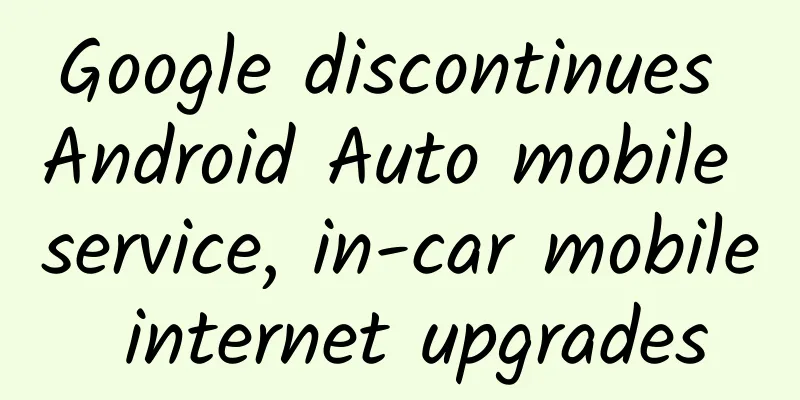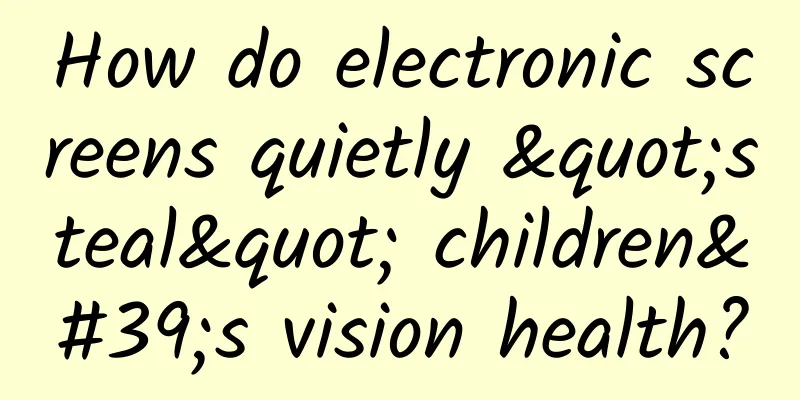Google discontinues Android Auto mobile service, in-car mobile internet upgrades

|
Google, which is trying to get a piece of the pie in the field of connected vehicles, has made some new changes recently. Recently, Google announced that the latest version of Android, Android 12, will stop supporting Android Auto, and some Google users will no longer be able to use this feature on their phones. In its place is the Google Assistant Driving Mode.
Android 12 no longer supports Android AutoForeign media XDA said in an article published last Thursday that some Google users recently found that the Android Auto mobile app could not run properly when they opened it, and a reminder notification popped up saying "Android Auto is now only available for car screens." So far, this notification reminder only appears on Pixel phones running Android 12. If you use a new Pixel with Android 12 to download this software from the Google App Store, it will be marked as "incompatible", which indicates that Android Auto may only stop service for specific users. Subsequently, Google responded and confirmed that Android Auto for mobile screens will indeed be closed with the release of Android 12. Users of Android 12 and above will no longer be able to enjoy this experience, but users using older versions of the operating system will still be able to run the app normally. Additionally, Google Assistant driving mode will become a built-in driving mode for Android 12 phones. Google's full statement is below:
Android Auto has a low presenceAndroid Auto is an Android feature designed specifically for cars launched by Google. It debuted at Google's I/O conference in 2014 and openly challenged Apple's CarPlay. Through Android Auto, Google hopes to connect mobile phones to compatible cars through this function, helping drivers to interact with car screens and mobile phone applications through voice, whether it is navigation, listening to music, or making phone calls and text messages, which will save time and effort. In short, Google wants to develop an Android-based car system, hoping to enter the automotive market, solve the problem of the difficulty of using traditional automotive systems, and take the opportunity to expand its smartphone business. A year later, the system was successfully put into mass production on the 2015 Hyundai Sonata. At that time, some foreign media commented that if you are used to using Google Maps, its in-car navigation will be consistent with expectations. However, some people believe that compared with Wave, another navigation application under Google, the device does not provide enough latest traffic information and the broadcast is not timely enough. However, the 2015 Google I/O conference did not mention Android Auto at all; it was not until 2016 that Google spent a few minutes at the end of the I/O conference to introduce some upgrades to Android Auto. This upgrade mainly includes three aspects:
However, in the three years since then, with the advent and continued development of Google Asssitant, Google seems to be increasingly focused on bringing the driving experience to Google Assistant. In 2019, Google announced Google Assistant Driving Mode, and stated that it would focus all its efforts on redesigning Android Auto on cars, and that Android Auto on mobile phones would not be further updated. At this time, Android Auto had already shown signs of discontinuing service on mobile phones. Where is the future of mobile phone and car interconnection?In fact, in the field of in-vehicle mobile Internet systems, in addition to Google and Apple, domestic HBAT also has related solutions, such as Alibaba's Banma Smart Driving, Baidu's CarLife and Apollo, Tencent's AI in Car, and Huawei's HMS for Car. However, the Internet of Vehicles solutions, especially mobile phone mapping solutions similar to Google Android Auto, have been developed for nearly ten years, but have not received a good market response. Industry insiders often regard them as a transitional solution for building the Internet of Vehicles. There are indeed some problems with the mobile phone mapping solution. For example, the real-time development and ecological scalability of the car system cannot match that of mobile phones. The iteration speed of mobile phone applications is too fast, and the car system needs to spend a lot of time and energy to keep up with the mobile phone. In addition, for security reasons, car manufacturers are reluctant to open up too much data to third parties, nor are they willing to hand over software control to mobile phone manufacturers. This is also the main obstacle to achieving mobile phone-car interconnection. So, how will mobile phones and car machines get along in the future? Volkswagen Wenwen CEO Zhang Renjie gave an answer when communicating with Leifeng.com's New Intelligent Driving:
This article is reproduced from Leiphone.com. If you need to reprint it, please go to Leiphone.com official website to apply for authorization. |
<<: Better than Android, is iOS 15’s universal search function so awesome?
>>: Alipay launches “Swipe Password”: a safer and more convenient way for visually impaired users
Recommend
Jawbone ends: The smart wearable device market is sailing high but the wind is not yet coming?
In the past two years, as the smartphone market h...
A brief review of the first quarter financial reports of new energy vehicle companies: The gap is widening, who can safely land in the high-speed reshuffle?
Battle reports can be deceiving, but battle lines...
As early as 60,000 years ago, did Australian people achieve "nut freedom"?
Macadamia nuts are the only native Australian pla...
In order to escape from being alone, the male red-back spider chooses to commit suicide
Once upon a time, there was a German who went on ...
4 tips for operating corporate Toutiao accounts!
Traditional Toutiao account operations mostly inv...
How to do ASO for news and information apps - Taking Toutiao as an example
Abstract: The promotion of information apps repre...
Refined strategic operation of private domain traffic
Dear friends, the topic I want to share with you ...
Quantitative Learning Cloud Lecture Hall Zhixing Guest Wang Xiaoli Quantitative Learning Band Trading System Issue 03
Course Catalog other 03rd issue of Zhiliangke 47 ...
Not the Onion, but bumblebees are really becoming a fish in California!
Starting from May 31 this year, four species of b...
The tableware you use every day, using it incorrectly is equivalent to chronic "poisoning"! Be careful of these 7 types of materials →
Tableware is something we come into contact with ...
Around the Mid-Autumn Festival, the delicacy that I have been craving for a year is finally on the market! It’s not mooncakes!
Author: Fluent AI Mapping As a fruit lover, my fa...
10 laws of telephone marketing!
Among the many ways to find customers, telephone ...
Peng Gang joins Yidao Car Rental: This LeTVization is not the same as that LeTVization
Last week, LeEco released a first-level organizat...
How can you socialize if you don’t follow hot topics?
There is an interesting phenomenon in the marketi...
Android waterfall photo wall implementation, experience the beauty of irregular arrangement Demo
Source code introduction Android waterfall photo ...









